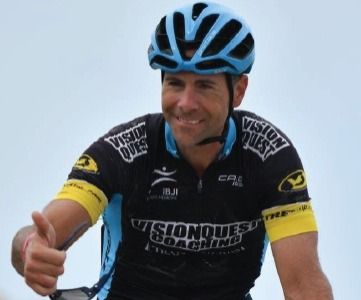I hope this last month has been about having fun on group rides, knocking off some gran fondos or group century rides and, for many of us Midwesterners, starting the transition to the off-road. This unstructured, but high volume riding is a good way to celebrate all that is cycling. As these rides get harder to complete (weather, daylight, fatigue) we need to start building a plan to balance life, rate-limiting factors, fun and opportunity. If we do this correctly we can set ourselves up for a great 2020 year of events and fitness without relying on "getting in shape in the springtime" to do so.
I have been thinking about next year a lot lately and this is what I’ve realized: so many of us think that spring is the secret to a great summer of events when, really, it is the winter that holds the key. And, guess what, folks: done properly, it takes less time than you think!
A great winter of training ushers in a lovely spring and summer. The intention behind winter training offers fewer miles, but with more purpose, better eating and diversified workouts. Let’s think about this for a second…
With purposeful indoor workouts, a great strength training program and some longer, easier work done on the trail, not only we can maintain our fitness, but perfect our cycling skills, improve our aerobic and anaerobic engines, have great training-life balance and hit the spring ready for longer outdoor rides.
Here is how I like to think about it:
1. Two intensity days is plenty for most people.
2. Build your strength slowly, but make sure to make this a priority.
3. Eat less since you’re training less, but make sure you balance that with your exercise focus (i.e., 1:1 carb to protein focus throughout the day, adjusted according to workout focus; more strength training = more protein, more intensity rides = more carbs).
4. Indoor training needs to include intensity mixed with skill development (our new VQ software does this better than any indoor ride experience I have ever seen!!!). It is so important to work on skills along with building power and we can do this through fun and engaging drills, monthly indoor VQ events, neuromuscular work, gamification and more... I have never been more excited about how we will be able to build the cycling toolbox while making everyone stronger!
5. Test to figure out what a perfect week will look like, knowing your FTP is not good enough in determining how you can improve. Learning more about where your power is coming from and whether you need more steady state work, intensity rides, neuromuscular work, explosive efforts or nutrition adjustments can only be determined through our metabolic lactate test or a whole lot of trial and error and critical power (CP) testing. I strongly suggest learning this before you dial in your fall and winter programs. Balancing intensity, endurance, skill development and neuromuscular work is difficult without an understanding of your physiology. Our metabolic lactate test will give you a very good idea of how you (or you and your coach) should structure your fall and winter programs and what amounts of all these things will best suit you and your goals.
6. Do something other than cycling or tri-training at least once a week. Play hockey, cross-country ski, ice skate, trail run, row, etc... Building other skill sets and keeping your athleticism is important and critical to overall mental and athletic balance.
The spring is too late to start thinking about 2020. That process starts now and, if balanced correctly, it will cause less spring panic and way less summer burnout from overtraining as you try desperately to pack in more training than you can handle to get ready for that big endurance gravel event. So, start a more balanced approach to your journey now and you will find yourself motivated and fit like never before come July!
Ciao~
Robbie

